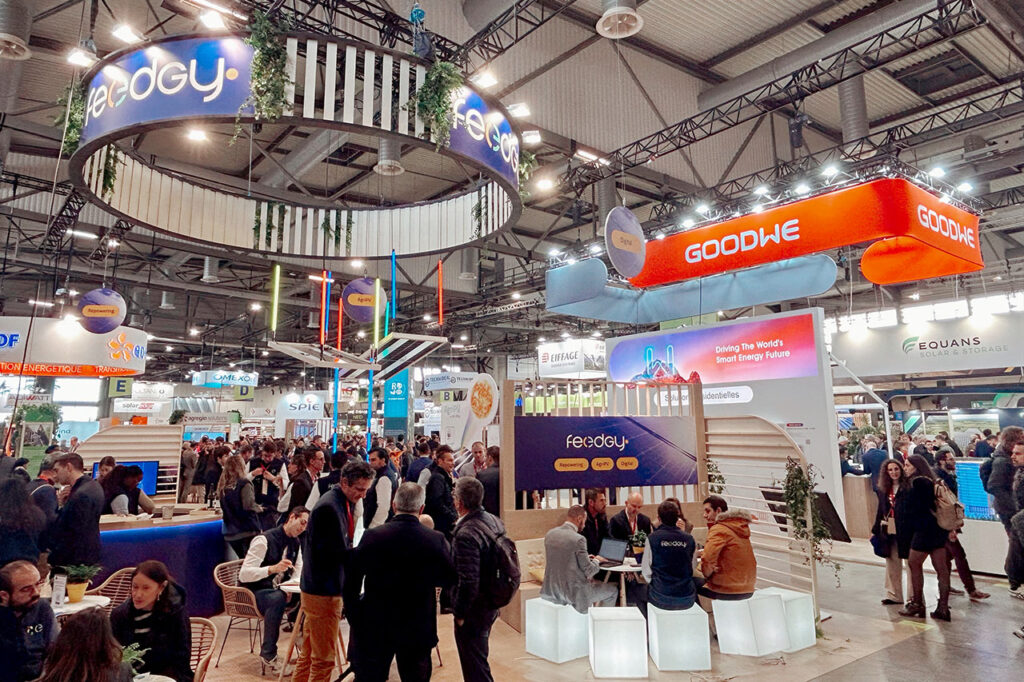Renewable energies: the PUI connects companies at the Energaïa trade fair
On December 11 and 12, 2024, the University Innovation Cluster (PUI), which brings together key players from Montpellier's academic, research and socio-economic sectors, presented its very first stand at the Energaïa trade show. The aim: to foster new synergies with the business world and highlight its most dynamic research and laboratories in the field of sustainable energy.

Within the Pôle Universitaire d'Innovation (PUI), the theme of renewable energies is one of the most strategic roadmaps. On December 11 and 12, 2024, some of its representatives visited the Energaïa trade show to give visitors a sneak preview of current projects, illustrating the PUI's collaborative dynamic.
Serving the energy transition
PUI's participation in this event, which attracted almost 22,000 people this year, had three main objectives. Firstly, to highlight the PUI's tools "and the diversity and complementarity of the partners present , such as the University of Montpellier,Inrae, CIRAD, CNRS and Satt AxLR ", explains Guilhem Thomasset, Transfer Engineer at CNRS and coordinator of the PUI's "renewable energies" thematic roadmap. The aim is also to showcase the skills and expertise of research laboratories, " with a view to initiating collaborations ". Finally, throughout the show, the PUI was keen to highlight the UM's training courses and the pool of students who could potentially be of interest to companies in the sector.
Keys to understanding
The University of Montpellier's Vice-President in charge of partnerships and innovation, Phillipe Combette, was also present on the stand. He spoke about topics such as "floating offshore ", " dynamic cables ", "hydrogen " and " photovoltaics ". In particular, he discussed the Méga Sète project, spearheaded by SolarinBlue, which involves the creation of a one-megawatt-peak offshore solar farm off the port of Sète-Frontignan, with a view to commercial deployment in the near future. In the long term, it could, for example, target port and island areas, or floating wind farms.
Throughout the day, four laboratories specializing in electronics, chemistry and materials also came to share their innovations. The Institut Charles Gerhardt de Montpellier(ICGM) presented HydrogenLab, a laboratory co-created with Michelin to develop new fuel cell and electrolyzer core materials, using innovative processes. The research director at the European Membrane Institute (IEM), Damien Voiry shared the premise of the E-éthylène project, which aims to "produce ethylene from CO2 by electro-reduction ".
Finally, the Institut de Chimie Séparative de Marcoule(ICSM) provided some insights into the battery recycling project it is conducting in collaboration with Singapore's Nanyang Technological University (NTU). On the second day of the show, participants discovered the expertise of Géosciences Montpellier, from its work on geothermal energy to its Eastern Lights project onCO2 storage and transport. TheBioWooEB unit expanded on its Bio4Africa agricultural diversification project, while the Laboratoire de biotechnologie de l'environnement(LBE) presented its Bio2E (environmental biotechnology and biorefinery) platform, open to collaborations with academic, institutional and industrial players, with the aim of valorizing agricultural, industrial and urban effluent matter in the form of biogas and other bioenergy.
Montpellier's PUI reflex
"It was a first. The PUI is a new tool for coordinating public establishments on the Montpellier site in the service of partnership research, technology transfer and business creation. We need to get the word out about it," insists Guilhem Thomasset. Ultimately, he hopes that companies facing a technological impasse will have the reflex to turn to the PUI and give rise to new collaborations. " If, at the end of this kind of event, we succeed in creating collaborations with the companies present, it will be a great success ", continues the engineer. The near future will tell.